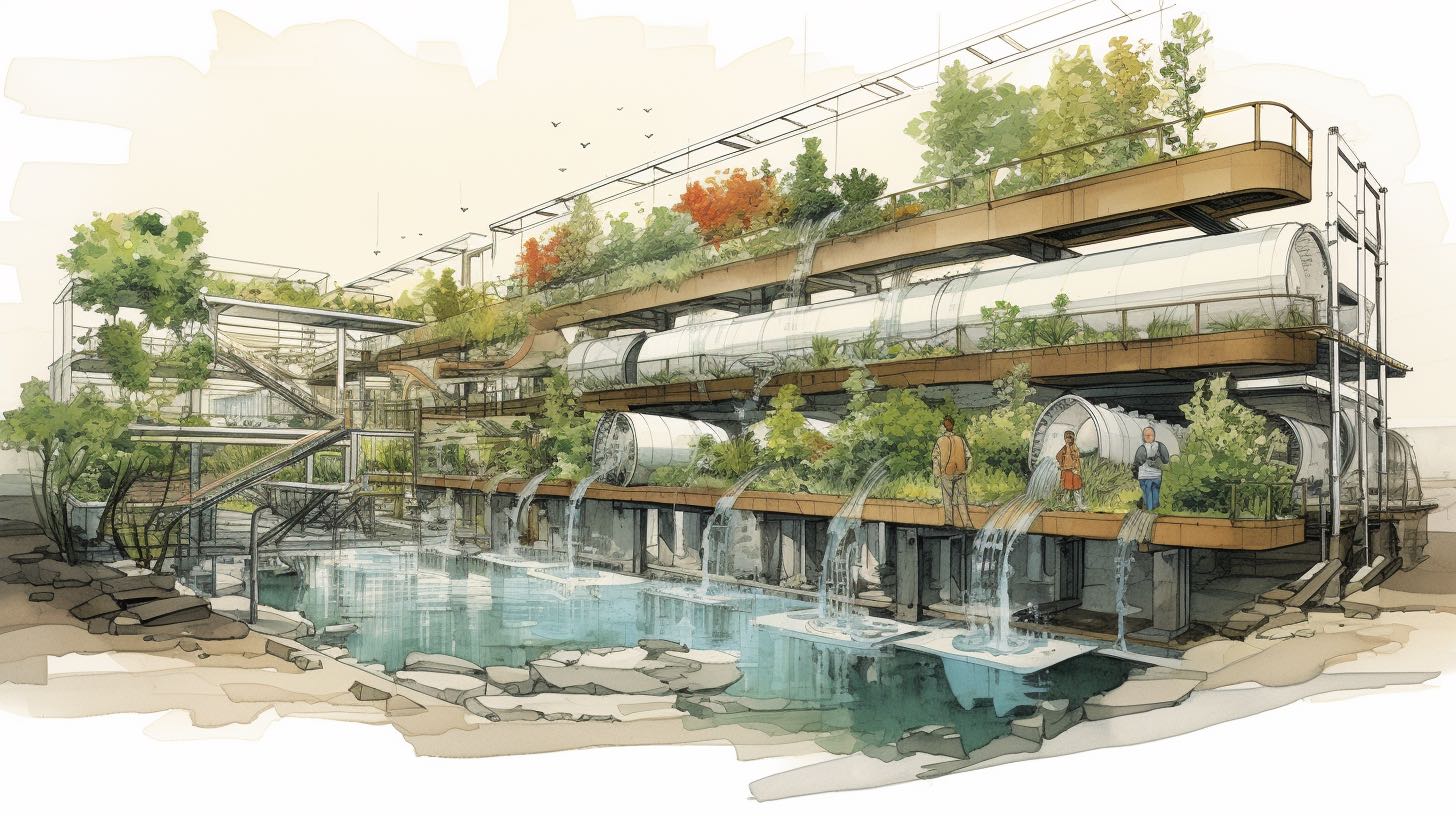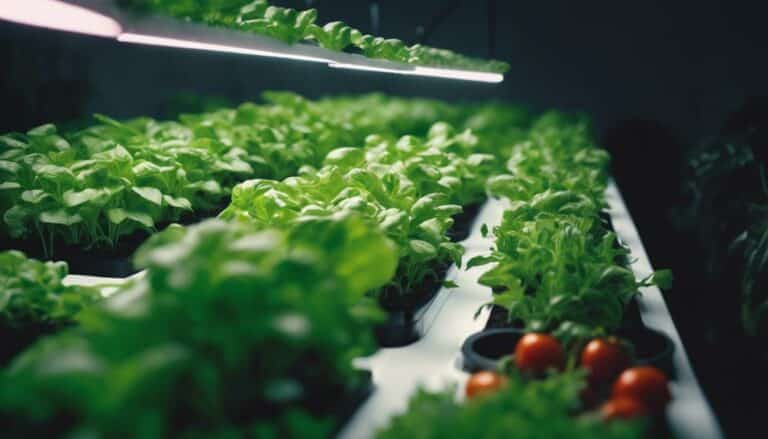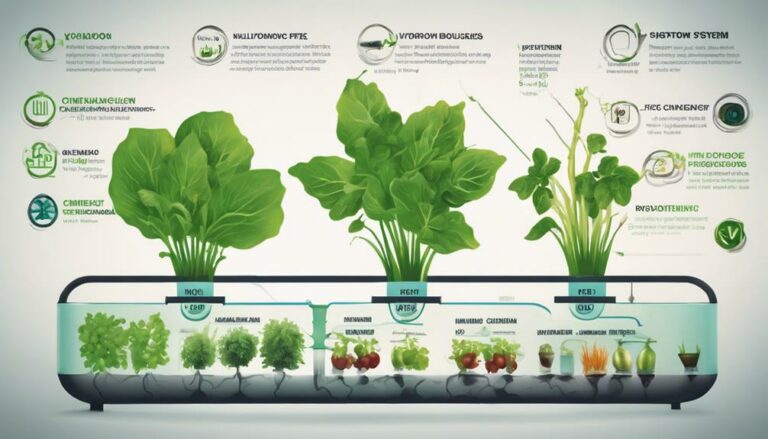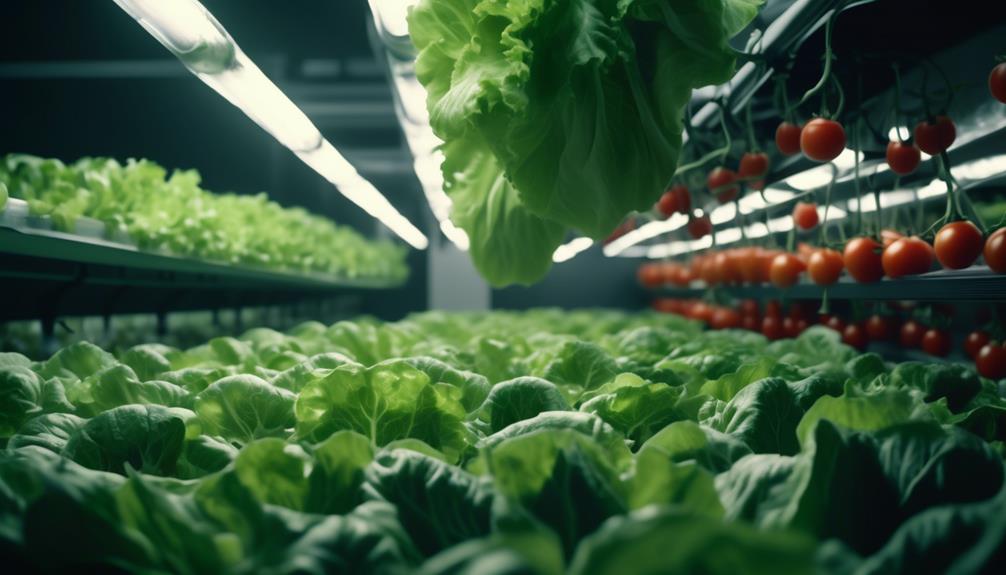I’m here to guide you through the fascinating world of aquaponics systems, where we combine hydroponics and aquaculture to create a sustainable and efficient way of growing plants and raising fish.
In this article, we will explore the basics of aquaponics, understand the role of hydroponics within this system, and delve into the numerous benefits it offers.
I’ll also provide step-by-step instructions on building and setting up your own aquaponics system, as well as tips for successful farming.
Let’s dive in!
Table of Contents
Key Takeaways
- Aquaponics systems integrate hydroponics and aquaculture to create a symbiotic relationship between plants and fish.
- Nutrient cycling is essential in these systems, as the waste produced by fish provides nutrients for plants, while plants filter the water, creating a clean environment for fish.
- Aquaponics maximizes plant growth and eliminates soil-borne diseases, making it a sustainable and efficient farming technique.
- Regular monitoring and maintenance of water parameters, nutrient balance, and system components are necessary for the successful operation of an aquaponics system.
The Basics of Aquaponics Systems
I find the basics of aquaponics systems fascinating. Aquaponics system design involves the integration of hydroponics and aquaculture, creating a sustainable and efficient method of food production. In this innovative system, plants and fish work together in a symbiotic relationship.
Nutrient cycling in aquaponics is a key aspect of its success. The waste produced by the fish provides valuable nutrients for the plants, while the plants filter the water, creating a clean and healthy environment for the fish. This closed-loop system eliminates the need for chemical fertilizers and ensures minimal waste.
The design of an aquaponics system involves carefully balancing the needs of the fish and plants, including factors such as water quality, temperature, and pH levels. Understanding the intricacies of nutrient cycling in aquaponics is essential for maintaining a thriving and productive system.
Understanding Hydroponics in Aquaponics
In my experience, hydroponics plays a crucial role in the success of an aquaponics system.
Hydroponics techniques allow for the cultivation of plants without the use of soil, which is advantageous in an aquaponics setup where the plants are grown in water. By eliminating soil, hydroponics eliminates the risk of soil-borne diseases and pests, ensuring a healthy crop.
Additionally, hydroponics allows for precise nutrient management, which is essential in an aquaponics system where the nutrient-rich water from the fish tank is used to nourish the plants. By carefully controlling the nutrient levels in the water, hydroponics enables optimal plant growth and maximizes the efficiency of the aquaponics system.
This combination of hydroponics and aquaculture creates a sustainable and innovative solution for food production.
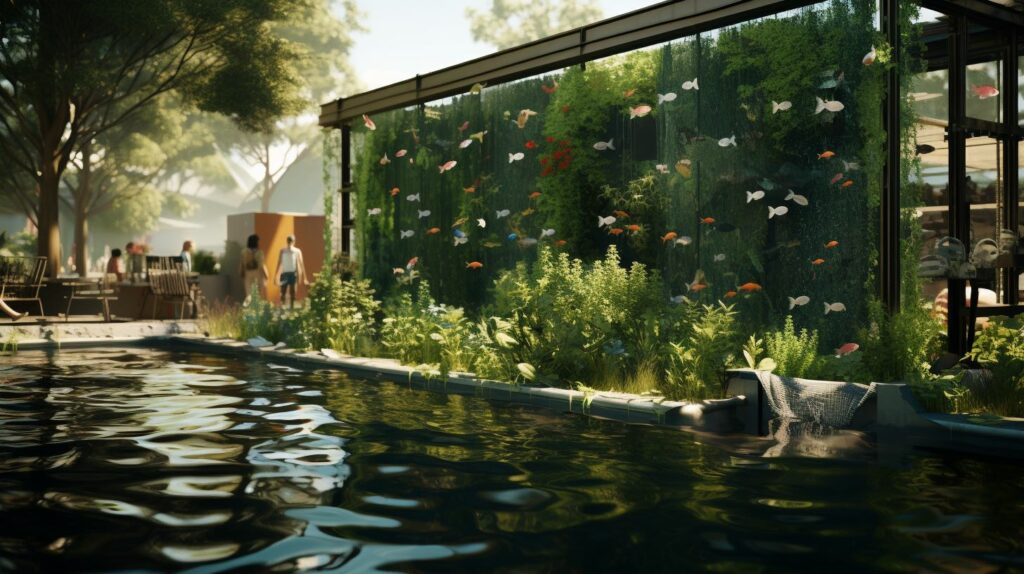
Exploring the Benefits of Aquaponics
The benefits of using this innovative method are clear – it maximizes plant growth and eliminates the risk of soil-borne diseases. Aquaponics combines hydroponics and aquaculture, creating a sustainable and efficient system for growing plants and raising fish. By utilizing the symbiotic relationship between plants and fish, aquaponics provides numerous advantages over traditional farming methods.
One of the main advantages of aquaponics is the maximization of plant growth. In this system, plants are constantly supplied with nutrient-rich water from the fish tank, allowing them to grow faster and produce higher yields. Additionally, the elimination of soil-borne diseases is a significant benefit. Since aquaponics does not use soil, plants are not susceptible to diseases commonly found in traditional farming.
However, it is important to consider the disadvantages of aquaponics as well. One disadvantage is the initial setup cost, which can be higher compared to traditional farming methods. Additionally, maintaining the system requires a certain level of knowledge and expertise, making it more challenging for beginners.
In summary, aquaponics offers numerous advantages such as maximized plant growth and reduced risk of soil-borne diseases. However, it is essential to carefully consider the initial cost and required expertise before implementing this innovative method.
| Advantages | Disadvantages |
|---|---|
| Maximizes plant growth | Higher setup cost |
| Eliminates soil-borne diseases | Requires knowledge and expertise |
| Sustainable and efficient system | Challenging for beginners |
Building and Setting Up Your Aquaponics System
Setting up my aquaponics system was a challenging but rewarding process. The success of an aquaponics system relies on careful design and selecting the right fish species.
When it comes to aquaponics system design, it’s crucial to consider the size and layout of the system. Factors such as the number of grow beds, the type of filtration system, and the water circulation must be taken into account.
Additionally, selecting the appropriate fish species is essential for a thriving system. Some popular choices include tilapia, trout, and catfish, as they’re hardy and can tolerate the fluctuating water conditions. It’s important to research the specific requirements and behavior of each fish species to ensure compatibility with the plants and the system as a whole.
Maintaining and Troubleshooting Your Aquaponics System
Maintaining and troubleshooting my aquaponics system requires regular monitoring and adjusting of water parameters to ensure optimal conditions for both the fish and plants. Here are four key aspects of aquaponics system maintenance and common problems to be aware of:
- Water Quality:
Regularly test the pH level, ammonia, nitrate, and dissolved oxygen levels to maintain a healthy environment for the fish and plants. Adjust these parameters as needed to promote optimal growth.
- Nutrient Balance:
Monitor the nutrient levels in the water, ensuring that the plants receive adequate nutrients while preventing excess accumulation that could harm the fish. Adjust the feeding schedule and fish stocking density accordingly.
- System Cleaning:
Regularly clean and maintain the system components, such as the grow beds, fish tanks, and filters, to prevent clogs and maintain proper water flow.
- Pest and Disease Control:
Keep an eye out for any signs of pests or diseases in the system. Implement preventive measures like introducing beneficial insects or using organic pest control methods to minimize the impact on both the fish and plants.
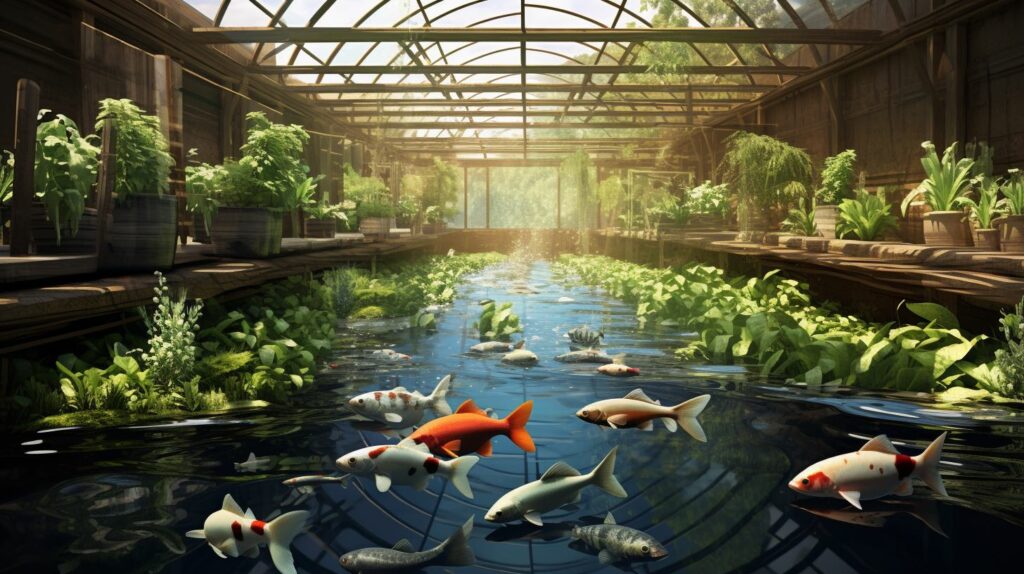
Tips for Successful Aquaponics Farming
I’ve found that diversifying the types of plants and fish in my aquaponics system has contributed to its overall success and productivity.
By incorporating different species of fish, such as tilapia and catfish, I’m able to create a balanced ecosystem where the waste produced by the fish provides essential nutrients for the plants.
This synergy between aquaculture and hydroponics allows me to maximize crop yields and optimize resource utilization.
Additionally, implementing various aquaponics farming techniques, such as vertical farming and nutrient film technique, further enhances the efficiency of my system.
Through careful monitoring and adjustment of water quality parameters, such as pH and dissolved oxygen levels, I’m able to maintain optimal growing conditions for my crops.
Overall, the key to successful aquaponics farming lies in the strategic combination of different plant and fish species, as well as the implementation of innovative techniques to maximize productivity and crop yields.
Frequently Asked Questions
Conclusion
In conclusion, aquaponics systems offer a unique and sustainable solution for combining hydroponics and aquaculture.
By harnessing the symbiotic relationship between plants and fish, these systems provide a self-sustaining ecosystem that requires minimal inputs and produces both fresh produce and fish.
With proper understanding, setup, and maintenance, aquaponics farming can be a successful venture for individuals looking to grow their own food in a resource-efficient manner.
So, why not give aquaponics a try and join the growing community of sustainable farmers?

